Searching for one-to-one tutoring in Mumbai? Edusession.live brings expert tutors directly to your screen with personalized online sessions tailored to your individual needs. From school subjects like Maths, Science, and English to exam preparation, our dedicated teachers provide focused guidance for better results.
Don't wanna be here? Send us removal request.
Text

Platina Resources Limited (ASX: PGM) has launched a strategic aircore drilling campaign at its Challa and Beete gold prospects in Western Australia—two strong assets identified in the highly prospective Murchison region. The campaign comprises 1,690 m across 14 holes at Challa, located 55 km east of Mt Magnet, and 1,536 m over 39 holes at Beete, situated near Norseman.
At Challa, drilling targets a northwest-trending splay off the Challa shear zone—previous drilling (CHAC0155) intersected 12 m grading 0.66 g/t Au, with a high-grade segment of 4 m at 1.7 g/t Au. Current efforts aim to trace that structure and define its lateral gold potential.
At Beete, the drill pattern is designed to infill earlier assays marked by anomalous gold and arsenic values. Results here will provide clarity ahead of deeper follow-up by RC or diamond drilling.
Managing Director Corey Nolan emphasised that these aircore programs are essential to testing current geological models before allocating further resources. The moves follow Platina’s earlier diamond drilling at Xanadu—adjacent to Challa—which returned promising deeper results and now faces government-supported exploration funding.
With rising gold prices and supportive infrastructure, Platina’s disciplined sampling-led approach underpins its balanced, multi-project strategy. Assays are expected within weeks, and positive results could trigger accelerated follow-up drilling.
These campaigns highlight Platina’s value-driving ambition to build a portfolio of gold projects in WA’s promising junior resource sector.
0 notes
Text

Osmond Resources Limited (ASX: OSM) has achieved a pivotal milestone in its Orion EU Critical Minerals Project in southern Spain by confirming high‑grade rutile and zircon in Zone 2, linking previously verified Zones 1 and 3. Released on 20 June 2025, recent assay results revealed impressive grades: Sample Z2_03 returned 8.2% rutile and 4.0% zircon, while Z2_04 reached 7.1% rutile and 3.2% zircon. These outcomes solidify the continuity of heavy mineral-rich layers across a defined 12-km strike within an 86.4 km² permit area.
Field mapping identifies the mineralisation within flat-lying sedimentary layers, contributing to the predictable nature of the system. This newfound lateral continuity increases confidence in geological models and supports plans for the upcoming maiden 15-hole drilling campaign. Permits are being finalised ahead of drilling, which aims to confirm vertical continuity and support a maiden Mineral Resource Estimate and Scoping Study due later in 2025.
The Orion project’s focus on rutile and zircon is strategically important. Both minerals are classified as critical by the EU, driving renewed interest in secure, local supply chains—especially for titanium and zirconium-dependent sectors such as aerospace, defence, and high-tech manufacturing. By confirming mineralisation across all three zones, Osmond demonstrates continuity, scale, and quality in its resource outlook. CEO Anthony Hall highlighted the significance: “Confirming Zone 2 is critical—not just for continuity, but as the gateway to scale.” With defined mineral horizons and strong sample grades, Osmond is now entering an exciting phase—evaluating subsurface continuity and progressing toward resource declaration. The Orion project stands as a compelling opportunity to deliver critical minerals from Europe’s under-explored groundwork.
0 notes
Text
Terra Metals Wins Drilling Approval for Phase 3 at Dante Project, Unlocking Multi‑Commodity Potential
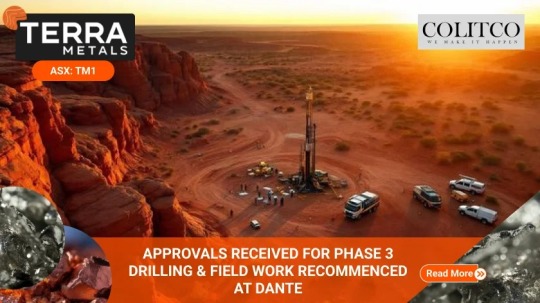
Terra Metals Limited (ASX: TM1) has secured critical heritage and drilling approvals for Phase 3 of its flagship Dante Project in Western Australia’s West Musgrave region, marking a major step forward in its efforts to confirm a multi‑commodity deposit of global significance.
New approvals enable extensive infill and extensional drilling at established Reef 1 and Reef 2 copper‑critical metal systems, along with first-ever drilling of untested electromagnetic (EM) anomalies and outcropping reef layers
Field reconnaissance has already started on recently acquired HRM tenements and the vast 400 km² Dante East area, which contains over 30 km of previously mapped reef exposure—triple the strike length of current targets.
The Dante Project is notable for its Platreef‑style, stratiform copper‑gold‑platinum group element‑vanadium‑titanium reefs—geological formations akin to South Africa’s famously rich Bushveld Complex. Prior drilling confirmed wide mineralised layers of copper‑PGE sulphide and titanium‑vanadium mineralisation from surface, with impressive first‑pass RC intercepts Recent assays include standout hits at Reef 1 North, such as 79 m @ 8.8% TiO₂, 0.13% Cu, 0.24% V₂O₅, and 0.07 g/t PGE₃ from surface
More recently, drill program results from Reef 2 closed a 2.7 km gap, confirming broad mineralisation—including high-grade hanging wall zones—with pending assays expected to build on the existing multi‑commodity model
Metallurgical test work from Phase 1 supports this, producing three high-grade concentrates—Cu‑Au‑PGM, vanadium‑magnetite, and titanium‑ilmenite—using simple, low-cost processing methods, highlighting strong commercial viability With over 17,000 m of drilling already completed and extensional targets now approved, Terra is preparing for a maiden Mineral Resource Estimate, supported by a recent A$4 million strategic funding injection from Golden Energy & Resources and M Resources, among others
Terra Metals’ Dante Project now stands as a highly promising, district-scale polymetallic asset. As Phase 3 drilling unfolds, the Company aims to transform this geological opportunity into a defined, economic resource—positioning itself at the forefront of critical minerals development in Australia.
0 notes
Text
MinRex Wraps Up Maiden RC Campaign at Fraser Range Ahead of Crucial Assays

MinRex Resources Limited (ASX: MRR) has concluded its inaugural reverse circulation (RC) drilling program targeting copper-gold and base-metal prospects at its Fraser Range Project, located approximately 120 km northeast of Esperance, WA. The campaign comprised nine holes totaling 1,958 m, drilled across five high-priority targets within the geologically favorable Albany‑Fraser belt. Supported under a farm-in agreement with West Cobar Metals (ASX: WC1), the program aimed to test both Iron Oxide Copper Gold (IOCG) and Broken Hill Type (BHT) targets. These deposit styles underpin major global producers and exhibit strong potential in this region. Technical Director Ian Shackleton confirmed that drilling was completed safely and efficiently, with samples now dispatched to laboratories. Assays are anticipated in early August 2025, providing critical data on mineral grades and distribution, which will inform MinRex’s decision to exercise its farm-in and potentially acquire a 50% interest. Target selection leveraged reinterpreted magnetic, gravity, and electromagnetic survey data, enabling accurate placement of drills on structurally rich zones analogous to Tier-1 ore systems. Pending results will determine MinRex’s next strategic steps, including deeper RC or diamond drilling at promising targets. The farm-in agreement grants a three-month decision window post-assay to advance a future stake acquisition. This campaign signals MinRex’s commitment to systematic exploration of high-potential ground, and securing positive results could materially enhance shareholder value in a region gaining renewed attention for critical-endowed material systems.
0 notes
Text
White Lion Emerges as Pacgold’s Crown Jewel: Geophysical Breakthrough Signals Major Gold Potential
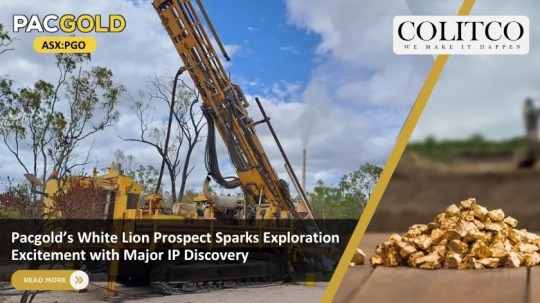
Pacgold Limited (ASX: PGO) has elevated its exploration momentum with a major breakthrough at the White Lion Prospect, part of the broader Alice River Gold Project in North Queensland. Through a newly completed Induced Polarisation (IP) survey, the company has defined a large-scale, high-intensity chargeability anomaly directly overlapping a previously mapped bullseye magnetic feature.
This discovery significantly upgrades the exploration profile of White Lion, aligning it with large-scale gold systems such as Mt Leyshon in Queensland and Fort Knox in Alaska. The 1.0km x 1.5km anomaly suggests the presence of sulphide-rich breccia zones typically associated with intrusion-related gold systems (IRGS)—a high-value target class known for their scale and longevity.
Located just 500 metres south of the Alice River Fault Zone (ARFZ), White Lion benefits from an ideal geological setting. Surface mapping has revealed quartz breccias extending over 250 metres, and historical shallow drilling has confirmed anomalous gold values. However, the core of the magnetic and chargeability anomaly remains untouched by modern drilling—leaving significant upside for first-pass results.
Advanced survey interpretation revealed a donut-shaped magnetic inversion at 200 metres depth, paired with coincident resistivity lows. These geophysical features suggest pyrite-sericite alteration halos and possible sulphide accumulation—key indicators of buried mineralised systems.
Pacgold’s next steps are sharply focused: finalising heritage approvals, completing pole-dipole IP surveys to refine drill depths, and launching a drill campaign by Q4 2025. The broader regional IP survey is also underway, aiming to establish continuity between White Lion and nearby prospects such as Victoria, Central, and Posie.
Investor sentiment is already shifting. On the day of the discovery announcement, Pacgold saw a dramatic rise in trading volume—over 470,000 shares, up from just 8,000 a week earlier—signalling growing market enthusiasm.
With high-impact drilling on the horizon, White Lion could mark a turning point for Pacgold, unlocking significant gold potential in one of Australia’s most fertile mineral belts.
0 notes
Text
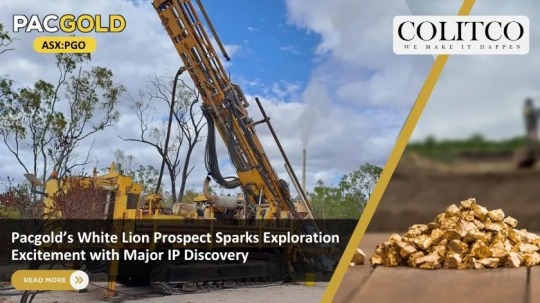
Pacgold Limited (ASX: PGO) has uncovered a game-changing geophysical anomaly at its White Lion Prospect within the Alice River Gold Project, North Queensland. This new Induced Polarisation (IP) chargeability anomaly, located directly over a previously defined “bullseye” magnetic target, represents one of the most significant exploration breakthroughs for the company to date.
Announced on 10 July 2025, the discovery highlights the growing potential for intrusion-related gold systems (IRGS) in the region, drawing comparisons to Queensland’s renowned Mt Leyshon deposit (5Moz gold). The identified IP signature spans a 1.0km x 1.5km area, suggesting a vast mineralised breccia system beneath the surface.
Managing Director Matthew Boyes called the result “an excellent outcome,” reinforcing White Lion as a priority drill target for Q4 2025. The geophysical anomalies point to sulphide-rich, pyrite-altered breccias—hallmarks of large IRGS deposits, which also include global giants like Fort Knox (Alaska).
What makes White Lion especially compelling is its proximity—just 500 metres south of the Alice River Fault Zone (ARFZ)—where surface mapping has revealed significant quartz breccias and gold-bearing structures. Remarkably, the central magnetic anomaly remains undrilled, offering a high-impact opportunity for discovery.
Pacgold is moving quickly. The company is finalising Pole-Dipole IP surveys and heritage clearance, with drill planning underway. Additionally, a broader regional IP program aims to link White Lion to nearby targets like Victoria Prospect and Central, potentially unlocking a mineralised corridor across the 30km strike.
Investor interest has surged: daily trading volume jumped nearly sixfold following the announcement, indicating market confidence in the prospect's potential.
With analogues to major deposits, advanced geophysical targeting, and untapped drill potential, White Lion could be the next flagship discovery in Queensland’s gold exploration narrative.
0 notes
Text
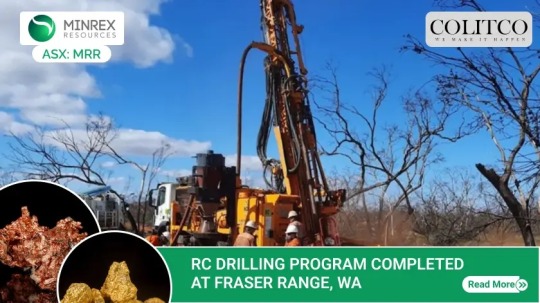
MinRex Resources Limited (ASX: MRR) has successfully wrapped up its maiden reverse circulation (RC) drilling program targeting copper-gold and base metal prospects at the Fraser Range Project in Western Australia. Located about 120 km north-east of Esperance, the campaign drilled nine holes totaling 1,958 m to test five high-priority geophysical targets—including Iron Oxide Copper Gold (IOCG) and Broken Hill Type (BHT) systems—within the Albany-Fraser mobile belt
The drilling campaign, fully funded through MinRex’s farm-in option agreement with West Cobar Metals (ASX: WC1), marks a significant step in MinRex’s strategy to secure a 50% stake in the project. According to Technical Director Ian Shackleton, the program was executed safely and successfully, with samples now heading to the lab for assays, which are expected in early August 2025 The selection of drilling sites was based on reinterpretation of magnetic, gravity, and electromagnetic data, which helped pinpoint five anomalies for testing. These anomalies are geologically significant as they mirror the structural and lithological settings of major ore systems like Nova-Bollinger, Mt Isa, and Broken Hill
. The area's prospective geology and structural architecture support the potential for large-scale IOCG and BHT mineralization.
Moving forward, MinRex has three months from the date of assay receipt to decide whether to exercise its option to acquire a 50% interest in the project. The expected assay results will be critical in evaluating economic potential and guiding future exploration phases.
Next Steps & Investor Outlook:
Assay results due in early August: These will determine the copper-gold tenor and continuity of mineralisation.
Farm-in decision looms: Based on assay outcomes, MinRex may choose to earn a 50% stake in the project.
Strategic positioning: The Fraser Range program reinforces MinRex’s commitment to exploring Tier-1 mineral systems with greenfields potential in Australia.
This milestone highlights MinRex's systematic approach and value-driven strategy in mineral exploration. with assay outcomes expected soon.
0 notes
Text
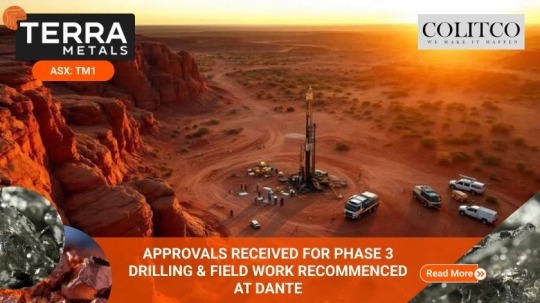
Terra Metals Limited (ASX: TM1) has secured essential heritage and environmental approvals to advance Phase 3 drilling at its flagship Dante Project in WA’s West Musgrave region. The permit allows infill and extensional drilling at Reef 1 and Reef 2—key copper-critical metal systems—and initiation of testing on previously unassessed EM anomalies and outcropping reef horizons.
The Dante Project represents a rare Platreef-style, stratiform polymetallic system hosting copper, platinum-group elements (PGE), vanadium, titanium, and gold. Earlier drilling identified wide historical mineralisation zones with significant intercepts, including 79 m at 8.8% TiO₂, 0.13% Cu, 0.24% V₂O₅, and 0.07 g/t PGE₃ from surface at Reef 1 North. Recent work at Reef 2 achieved further continuity over a 2.7 km strike.
Phase 1 and Phase 2 metallurgical studies produced multiple market-ready concentrates using simple flowsheets, including Cu‑Au‑PGE, vanadium‑magnetite, and titanium‑ilmenite—a testament to the deposit’s commercial versatility.
With over 17,000 m of drilling completed, Phase 3 includes infill drilling to meet JORC resource standards and exploratory drilling in the expansive Dante East zone, which boasts over 30 km of mapped stratigraphy—tripling the known strike.
Terra Metals recently secured A$4 million in strategic funding from partners including Golden Energy & Resources, setting the stage for accelerated exploration. Upon completion of Phase 3 assays, the company aims to fast-track a maiden Mineral Resource Estimate, bolstered by district-scale logistics and technical merits.
Dante’s polymetallic nature aligns with global demand for critical minerals and positions Terra Metals to become a leading supplier in the evolving low-carbon metals sector.
0 notes
Text

Platina Resources Limited (ASX: PGM) has commenced a comprehensive aircore drilling campaign targeting its Challa and Beete gold projects in Western Australia. The two simultaneous programs aim to delineate extensions of previously identified gold anomalies and provide critical data ahead of potential deeper drilling campaigns At the Challa Project, situated 55 km east of Mt Magnet in the Murchison region, the program includes 1,690 m across 14 closely spaced holes. This follows an earlier aircore hole (CHAC0155) that intersected 12 m at 0.66 g/t Au from 100 m, including 4 m at 1.7 g/t Au . The current drilling focuses on the northwest-trending splay of the Challa shear zone—geologically and geochemically compelling—seeking to enhance the current understanding of the structure and define its mineral extent
At the Beete Project, roughly 50 km southeast of the high-grade Norseman mining centre, the program comprises 1,536 m over 39 holes. These follow up on anomalous gold and arsenic results obtained in the first-phase drilling, now aimed at infill to better resolve the geology and mineral footprints before any further drill planning .
The dual campaign reflects Platina’s strategic pivot toward advancing multiple WA gold assets. According to Managing Director Corey Nolan, the programs are designed to “test the current geological interpretation before the junior carries out any further work at the target”
These drill efforts build on previous successes, such as diamond drilling below the Cleopatra geophysical target at the Xanadu project—which returned 16.1 m at 0.2 g/t Au from 202 m—highlighting deeper potential in the broader project suite
With a strong balance sheet and rising gold price backdrop, Platina remains well-funded to execute its strategy. It is leveraging state-based incentives, such as EIS co-funding for deeper targets like Xanadu Deeps, to maximise the exploration lift from current results
Next Steps & Investor Outlook:
Assays from the current aircore drilling campaigns are eagerly awaited, likely within the next several weeks.
Positive results could trigger Phase 2 follow-up work, including reverse circulation or diamond drilling at expanded targets.
The company’s aggressive multi-project strategy, supported by robust cash balances, is expected to drive value-enhancing outcomes in the coming months.
0 notes
Text
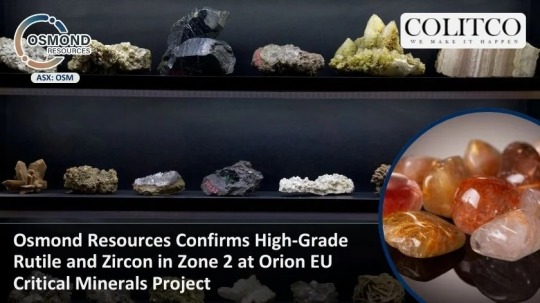
Osmond Resources Limited (ASX: OSM) has further strengthened its Orion EU Critical Minerals Project in Andalucía, southern Spain by confirming high-grade rutile and zircon mineralisation in Zone 2, which links the previously verified Zones 1 and 3. This breakthrough, revealed in the latest geological assessment, reinforces the presence of a stratabound, lateral mineral system spanning over a 12 km east–west corridor
Recent assay results from two standout rock samples in Zone 2 include:
Z2_03: 8.2% rutile and 4.0% zircon
Z2_04: 7.1% rutile and 3.2% zircon
These findings are complemented by extensive field mapping, which has identified multiple stratabound seams across all three zones. Geological evaluations suggest these heavy-mineral-rich layers are likely continuous beneath the surface Colitco. The mineral assemblage also includes rare earth elements and silicon metal potential, with sizeable quartz-rich waste streams expected to be diverted into silicon metal production—enhancing project economics
A 150 kg bulk sample previously submitted to SGS Canada confirmed impressive concentrations—up to 15% rutile, 9% zircon, and over 16,000 ppm total rare earth oxides (TREO), underscoring the project's multi-commodity value
Chief Executive Officer Anthony Hall emphasized the strategic importance of Zone 2, stating that the current data substantially increases confidence in mineral continuity. Plans are now underway for a 15-hole maiden drilling program, designed to validate both vertical and lateral grade continuity. This campaign precedes a maiden Mineral Resource Estimate and upcoming Scoping Study on the back of strong market interest in critical minerals
Importantly, rutile and zircon are considered EU strategic raw materials, and Europe's growing emphasis on secure domestic supplies elevates Orion’s significance. With high-grade titanium and zirconium emerging from surface to sub-surface potential, Osmond is emerging as a leading candidate to support EU's supply chain resilience
In summary, confirmation of Zone 2's mineralisation marks a pivotal moment for Osmond Resources. The project now demonstrates significant lateral continuity, multiple commodity opportunities, and clear logistics advantages due to its flat-lying, predictable geology. The forthcoming drilling campaign will be the defining step toward resource delineation and commercial development.
0 notes
Text
Pacgold’s White Lion Prospect Ignites Investor Buzz with Major Geophysical Discovery in Queensland
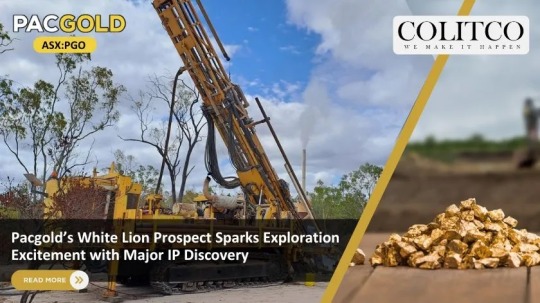
Pacgold Limited (ASX: PGO) has uncovered a game-changing geophysical anomaly at its White Lion Prospect within the Alice River Gold Project, North Queensland. This new Induced Polarisation (IP) chargeability anomaly, located directly over a previously defined “bullseye” magnetic target, represents one of the most significant exploration breakthroughs for the company to date.
Announced on 10 July 2025, the discovery highlights the growing potential for intrusion-related gold systems (IRGS) in the region, drawing comparisons to Queensland’s renowned Mt Leyshon deposit (5Moz gold). The identified IP signature spans a 1.0km x 1.5km area, suggesting a vast mineralised breccia system beneath the surface.
Managing Director Matthew Boyes called the result “an excellent outcome,” reinforcing White Lion as a priority drill target for Q4 2025. The geophysical anomalies point to sulphide-rich, pyrite-altered breccias—hallmarks of large IRGS deposits, which also include global giants like Fort Knox (Alaska).
What makes White Lion especially compelling is its proximity—just 500 metres south of the Alice River Fault Zone (ARFZ)—where surface mapping has revealed significant quartz breccias and gold-bearing structures. Remarkably, the central magnetic anomaly remains undrilled, offering a high-impact opportunity for discovery.
Pacgold is moving quickly. The company is finalising Pole-Dipole IP surveys and heritage clearance, with drill planning underway. Additionally, a broader regional IP program aims to link White Lion to nearby targets like Victoria Prospect and Central, potentially unlocking a mineralised corridor across the 30km strike.
Investor interest has surged: daily trading volume jumped nearly sixfold following the announcement, indicating market confidence in the prospect's potential.
With analogues to major deposits, advanced geophysical targeting, and untapped drill potential, White Lion could be the next flagship discovery in Queensland’s gold exploration narrative.
0 notes
Text
Terra Metals Clears Drilling Hurdles for Phase 3 at Dante—Targets Multi‑Commodity Reef System

Terra Metals Limited (ASX: TM1) has secured essential heritage and environmental approvals to advance Phase 3 drilling at its flagship Dante Project in WA’s West Musgrave region. The permit allows infill and extensional drilling at Reef 1 and Reef 2—key copper-critical metal systems—and initiation of testing on previously unassessed EM anomalies and outcropping reef horizons.
The Dante Project represents a rare Platreef-style, stratiform polymetallic system hosting copper, platinum-group elements (PGE), vanadium, titanium, and gold. Earlier drilling identified wide historical mineralisation zones with significant intercepts, including 79 m at 8.8% TiO₂, 0.13% Cu, 0.24% V₂O₅, and 0.07 g/t PGE₃ from surface at Reef 1 North. Recent work at Reef 2 achieved further continuity over a 2.7 km strike.
Phase 1 and Phase 2 metallurgical studies produced multiple market-ready concentrates using simple flowsheets, including Cu‑Au‑PGE, vanadium‑magnetite, and titanium‑ilmenite—a testament to the deposit’s commercial versatility.
With over 17,000 m of drilling completed, Phase 3 includes infill drilling to meet JORC resource standards and exploratory drilling in the expansive Dante East zone, which boasts over 30 km of mapped stratigraphy—tripling the known strike.
Terra Metals recently secured A$4 million in strategic funding from partners including Golden Energy & Resources, setting the stage for accelerated exploration. Upon completion of Phase 3 assays, the company aims to fast-track a maiden Mineral Resource Estimate, bolstered by district-scale logistics and technical merits.
Dante’s polymetallic nature aligns with global demand for critical minerals and positions Terra Metals to become a leading supplier in the evolving low-carbon metals sector.
0 notes
Text

Terra Metals Limited (ASX: TM1) has secured critical heritage and drilling approvals for Phase 3 of its flagship Dante Project in Western Australia’s West Musgrave region, marking a major step forward in its efforts to confirm a multi‑commodity deposit of global significance.
New approvals enable extensive infill and extensional drilling at established Reef 1 and Reef 2 copper‑critical metal systems, along with first-ever drilling of untested electromagnetic (EM) anomalies and outcropping reef layers
Field reconnaissance has already started on recently acquired HRM tenements and the vast 400 km² Dante East area, which contains over 30 km of previously mapped reef exposure—triple the strike length of current targets.
The Dante Project is notable for its Platreef‑style, stratiform copper‑gold‑platinum group element‑vanadium‑titanium reefs—geological formations akin to South Africa’s famously rich Bushveld Complex. Prior drilling confirmed wide mineralised layers of copper‑PGE sulphide and titanium‑vanadium mineralisation from surface, with impressive first‑pass RC intercepts Recent assays include standout hits at Reef 1 North, such as 79 m @ 8.8% TiO₂, 0.13% Cu, 0.24% V₂O₅, and 0.07 g/t PGE₃ from surface
More recently, drill program results from Reef 2 closed a 2.7 km gap, confirming broad mineralisation—including high-grade hanging wall zones—with pending assays expected to build on the existing multi‑commodity model
Metallurgical test work from Phase 1 supports this, producing three high-grade concentrates—Cu‑Au‑PGM, vanadium‑magnetite, and titanium‑ilmenite—using simple, low-cost processing methods, highlighting strong commercial viability With over 17,000 m of drilling already completed and extensional targets now approved, Terra is preparing for a maiden Mineral Resource Estimate, supported by a recent A$4 million strategic funding injection from Golden Energy & Resources and M Resources, among others
Terra Metals’ Dante Project now stands as a highly promising, district-scale polymetallic asset. As Phase 3 drilling unfolds, the Company aims to transform this geological opportunity into a defined, economic resource—positioning itself at the forefront of critical minerals development in Australia.
0 notes
Text
Platina Commences Strategic Aircore Drilling at WA’s Challa & Beete Projects

Platina Resources Limited (ASX: PGM) has launched a strategic aircore drilling campaign at its Challa and Beete gold prospects in Western Australia—two strong assets identified in the highly prospective Murchison region. The campaign comprises 1,690 m across 14 holes at Challa, located 55 km east of Mt Magnet, and 1,536 m over 39 holes at Beete, situated near Norseman.
At Challa, drilling targets a northwest-trending splay off the Challa shear zone—previous drilling (CHAC0155) intersected 12 m grading 0.66 g/t Au, with a high-grade segment of 4 m at 1.7 g/t Au. Current efforts aim to trace that structure and define its lateral gold potential.
At Beete, the drill pattern is designed to infill earlier assays marked by anomalous gold and arsenic values. Results here will provide clarity ahead of deeper follow-up by RC or diamond drilling.
Managing Director Corey Nolan emphasised that these aircore programs are essential to testing current geological models before allocating further resources. The moves follow Platina’s earlier diamond drilling at Xanadu—adjacent to Challa—which returned promising deeper results and now faces government-supported exploration funding.
With rising gold prices and supportive infrastructure, Platina’s disciplined sampling-led approach underpins its balanced, multi-project strategy. Assays are expected within weeks, and positive results could trigger accelerated follow-up drilling.
These campaigns highlight Platina’s value-driving ambition to build a portfolio of gold projects in WA’s promising junior resource sector.
0 notes
Text

Platina Resources Limited (ASX: PGM) has commenced a comprehensive aircore drilling campaign targeting its Challa and Beete gold projects in Western Australia. The two simultaneous programs aim to delineate extensions of previously identified gold anomalies and provide critical data ahead of potential deeper drilling campaigns At the Challa Project, situated 55 km east of Mt Magnet in the Murchison region, the program includes 1,690 m across 14 closely spaced holes. This follows an earlier aircore hole (CHAC0155) that intersected 12 m at 0.66 g/t Au from 100 m, including 4 m at 1.7 g/t Au . The current drilling focuses on the northwest-trending splay of the Challa shear zone—geologically and geochemically compelling—seeking to enhance the current understanding of the structure and define its mineral extent
At the Beete Project, roughly 50 km southeast of the high-grade Norseman mining centre, the program comprises 1,536 m over 39 holes. These follow up on anomalous gold and arsenic results obtained in the first-phase drilling, now aimed at infill to better resolve the geology and mineral footprints before any further drill planning .
The dual campaign reflects Platina’s strategic pivot toward advancing multiple WA gold assets. According to Managing Director Corey Nolan, the programs are designed to “test the current geological interpretation before the junior carries out any further work at the target”
These drill efforts build on previous successes, such as diamond drilling below the Cleopatra geophysical target at the Xanadu project—which returned 16.1 m at 0.2 g/t Au from 202 m—highlighting deeper potential in the broader project suite
With a strong balance sheet and rising gold price backdrop, Platina remains well-funded to execute its strategy. It is leveraging state-based incentives, such as EIS co-funding for deeper targets like Xanadu Deeps, to maximise the exploration lift from current results
Next Steps & Investor Outlook:
Assays from the current aircore drilling campaigns are eagerly awaited, likely within the next several weeks.
Positive results could trigger Phase 2 follow-up work, including reverse circulation or diamond drilling at expanded targets.
The company’s aggressive multi-project strategy, supported by robust cash balances, is expected to drive value-enhancing outcomes in the coming months.
0 notes
Text
Osmond Expands High‑Grade Corridor—Zone 2 Completes Orion Project Trifecta
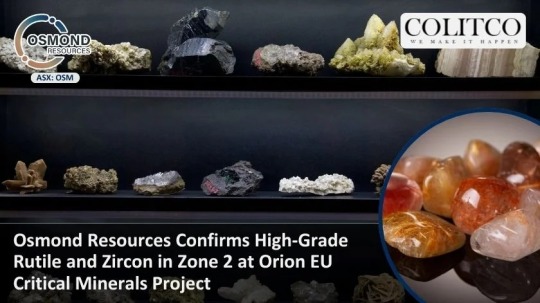
Osmond Resources Limited (ASX: OSM) has achieved a pivotal milestone in its Orion EU Critical Minerals Project in southern Spain by confirming high‑grade rutile and zircon in Zone 2, linking previously verified Zones 1 and 3. Released on 20 June 2025, recent assay results revealed impressive grades: Sample Z2_03 returned 8.2% rutile and 4.0% zircon, while Z2_04 reached 7.1% rutile and 3.2% zircon. These outcomes solidify the continuity of heavy mineral-rich layers across a defined 12-km strike within an 86.4 km² permit area.
Field mapping identifies the mineralisation within flat-lying sedimentary layers, contributing to the predictable nature of the system. This newfound lateral continuity increases confidence in geological models and supports plans for the upcoming maiden 15-hole drilling campaign. Permits are being finalised ahead of drilling, which aims to confirm vertical continuity and support a maiden Mineral Resource Estimate and Scoping Study due later in 2025.
The Orion project’s focus on rutile and zircon is strategically important. Both minerals are classified as critical by the EU, driving renewed interest in secure, local supply chains—especially for titanium and zirconium-dependent sectors such as aerospace, defence, and high-tech manufacturing. By confirming mineralisation across all three zones, Osmond demonstrates continuity, scale, and quality in its resource outlook.
CEO Anthony Hall highlighted the significance: “Confirming Zone 2 is critical—not just for continuity, but as the gateway to scale.” With defined mineral horizons and strong sample grades, Osmond is now entering an exciting phase—evaluating subsurface continuity and progressing toward resource declaration. The Orion project stands as a compelling opportunity to deliver critical minerals from Europe’s under-explored groundwork.
0 notes
Text

Osmond Resources Limited (ASX: OSM) has further strengthened its Orion EU Critical Minerals Project in Andalucía, southern Spain by confirming high-grade rutile and zircon mineralisation in Zone 2, which links the previously verified Zones 1 and 3. This breakthrough, revealed in the latest geological assessment, reinforces the presence of a stratabound, lateral mineral system spanning over a 12 km east–west corridor
Recent assay results from two standout rock samples in Zone 2 include:
Z2_03: 8.2% rutile and 4.0% zircon
Z2_04: 7.1% rutile and 3.2% zircon
These findings are complemented by extensive field mapping, which has identified multiple stratabound seams across all three zones. Geological evaluations suggest these heavy-mineral-rich layers are likely continuous beneath the surface Colitco. The mineral assemblage also includes rare earth elements and silicon metal potential, with sizeable quartz-rich waste streams expected to be diverted into silicon metal production—enhancing project economics
A 150 kg bulk sample previously submitted to SGS Canada confirmed impressive concentrations—up to 15% rutile, 9% zircon, and over 16,000 ppm total rare earth oxides (TREO), underscoring the project's multi-commodity value
Chief Executive Officer Anthony Hall emphasized the strategic importance of Zone 2, stating that the current data substantially increases confidence in mineral continuity. Plans are now underway for a 15-hole maiden drilling program, designed to validate both vertical and lateral grade continuity. This campaign precedes a maiden Mineral Resource Estimate and upcoming Scoping Study on the back of strong market interest in critical minerals
Importantly, rutile and zircon are considered EU strategic raw materials, and Europe's growing emphasis on secure domestic supplies elevates Orion’s significance. With high-grade titanium and zirconium emerging from surface to sub-surface potential, Osmond is emerging as a leading candidate to support EU's supply chain resilience
In summary, confirmation of Zone 2's mineralisation marks a pivotal moment for Osmond Resources. The project now demonstrates significant lateral continuity, multiple commodity opportunities, and clear logistics advantages due to its flat-lying, predictable geology. The forthcoming drilling campaign will be the defining step toward resource delineation and commercial development.
0 notes